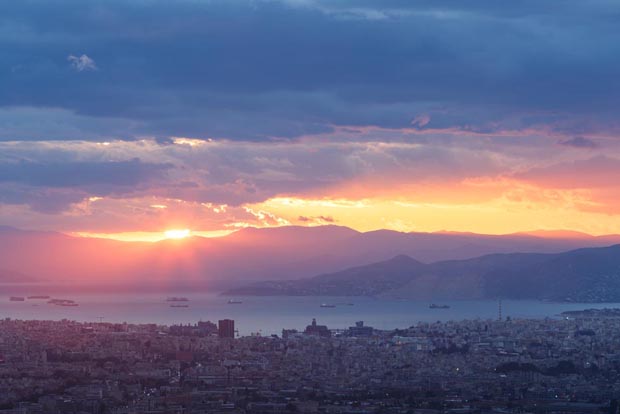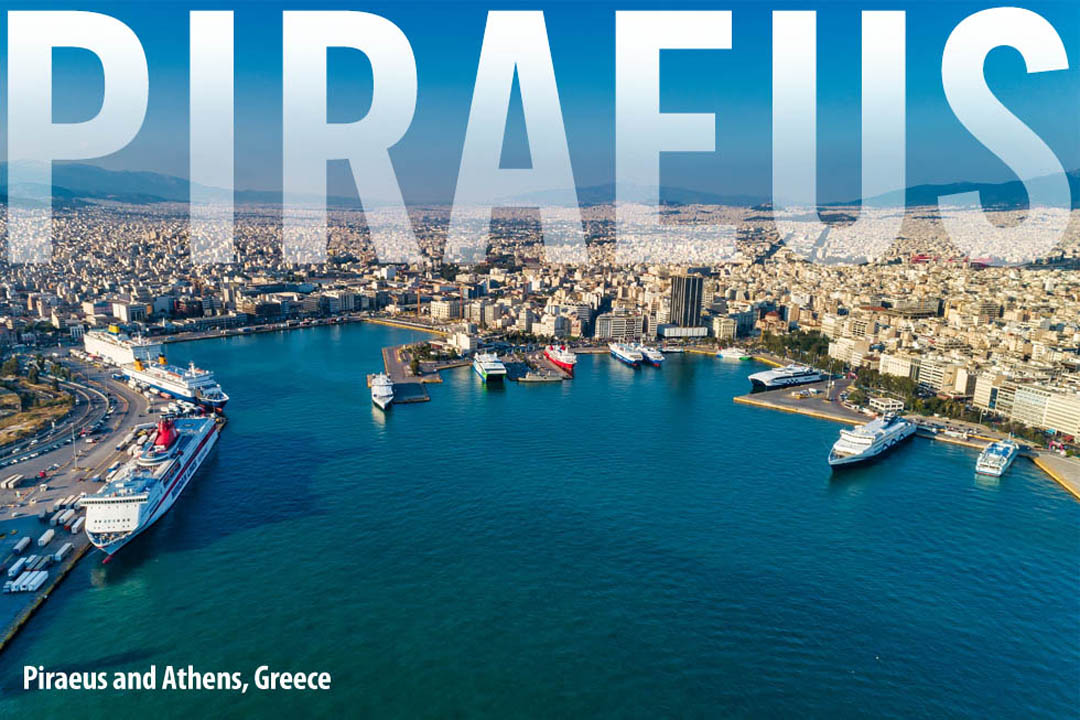Piraeus
Greek spelling: Πειραιάς
Old Greek spelling: Πειραιεύς
Map of Piraeus
How the new Piraeus subway stations will benefit the area
October 10, 2022: Story at Kathimerini [Greek]
Estimated population 163,688 people (2011 census, new data coming in December 2022 from the Hellenic Statistical Authority web site )
About Piraeus
Piraeus figures in Greek history continually linked to Athens itself, and the two are so closely aligned that they merge. Invasions intent on the capture of Athens often began with landings at Piraeus, and the long 7-mile road (which was easily viewable from raised areas in Athens) that once linked the city to the harbor itself was always closely watched and guarded because, though some modern travel writers conflate the two, Athens and Piraeus are actually two separate places, just as the two are in fact separate places within the larger region of Attika. That 7-mile link has been modernized since the 20th century, the road surrounded by housing and industrial development, such that the additional roads have made Piraeus and Athens integral to each others traffic systems.
An irony is that many tourists going to the islands do not in fact spend any time in Athens, but only Piraeus while waiting to board ships, yet will feel they've visited Athens.
The "Long Walls" of Piraeus
A series of long walled fortifications to protect the road between Piraeus to Athens was constructed under the leadership of Themistocles (524 BC – 460 BC). The idea was to preserve the route to Piraeus as a guarded space so that while under siege, Athens could still get to the waters of the Saronic gulf. The walled system worked successfully at times, and was destroyed and rebuilt over succeeding centuries when warfare cropped up. It was last dismantled by the Romans under Sulla (Roman consul Cornelius Sulla Felix, 138 BC – 78 BC) in 86 BC.
During the time of Pericles (who is the main author of The Parthenon) the people of Piraeus were quite independent and had sympathies with Sparta (Athens major competitor in ancient times) and so the people of Piraeus were considered rebellious, which earned them Pericles' spite, who called Piraeus "the eyesore of the Aegean." (He actually had much, much harsher words for other Greek-speaking groups outside of Attika).
The Piraeus Archeological Museum (at Filellinon and Alkiviadou streets) has a collection of significant archeological finds and presents a multi-faceted history of the port city through the millenniums.

Piraeus marina
The rebuilding of Piraeus
During the Ottoman control of Greece (1453 - 1821), Piraeus was radically depopulated and became a deserted and little used port area known principally for a meagre amount of boat traffic and a monastery in the area (the monastery of Saint Spyridon was where the streets Karpathou and Andrianopoulou meet. A church, Saint Spyridon Church, is where Filonos and Pouri streets meet. Spyridon is the Greek Orthodox patron saint of Piraeus, along with the island of Corfu).
Following the Greek War of Independence, people began to live in the area once again, and the port began to be rebuilt in 1834, becoming a municipality in 1835, a demonstration of the Greek resolve to again establish a Greek maritime industry. But just prior to that, the area had only been a fishing village known in the area as "Porto Draco" or "Porto Leone." Reestablishing the ancient name of "Piraeus" (which means from the Greek "point of passage") as once again the official name, it rapidly grew to became the most important entrance into Greece in the age of travel by boat, and was especially the main way to the capitol of Athens, bypassing overland routes which could periodically by plagued by warfare, seasonal weather or bandits.
Blockading the Port of Piraeus
The importance of the port in modern Greek history is demonstrated by the British navy blockading it several times to put pressure on the Greek government. The first instance in 1850 was to pressure the Athenian authorities to compensate a British subject, David Pacifico, who had his home in Athens ransacked by a mob that had (mistakenly) blamed him for a ban by the authorities on burning the traditional effigy of Judas Iscariot during Easter (the ban had actually been put in place out of a concern of insulting the visiting Lord Rothschild). The second instance the British blockaded Piraeus was when King Otto (the first King of Greece of the modern era) attempted to use the Greek army against Turkey. He had taken the side of the Russians in the Crimean War (1853–56) and as they were Britain's enemy in that conflict the British ultimately occupied Piraeus to stifle any help Greece might lend in that fight.
Port of departure from Greece to America and beyond
In the early 20th century, Piraeus was the principal port for Greeks immigrating to the United States, but quotas instigated in 1921 brought the flow to the USA to a stop. Beginning in 1923, a mammoth surge of over 100,000 Greek refugees settled in Piraeus, most being Greeks forced out of Smyrna, Turkey.
During the years when Greece was controlled by the Junta (1967-1974), central Piraeus was radically changed by the destruction of older buildings (many highly prized for historical value) and modernization began. Ironically, following this time frame, the leadership in Piraeus have chosen design ideas which emphasize a recreation of neoclassical styles, partially in reaction to the loss of the historical architecture during the years of the dictatorship.
Today the port is the second most used passenger port in the world, with upwards of 20 million people per year passing through the facilities there. It is also one of the three most busy commercial ports in the entire Mediterranean.
Largest Ports in the Mediterranean Map - click to enlarge
Piraeus in 2019 became Europe's number one container port
May 26, 2020: Story at Protothema [English]
Piraeus is not only the largest of Greece’s 444 ports, it’s also the biggest container port in the Eastern Mediterranean and one of the top 50 container ports worldwide. Known today as the “southern gate of Europe,” Piraeus is the West’s closest port to the Suez Canal, the entry point for incoming Asian exports to Europe and the exit point for European exports to Asia..."
Story at eKathimerini

Athens and Piraeus

Piraeus, with the profile of the Museum Ship Averof and the destroyer Velos (also a museum craft) on the water. Click image to enlarge.
Reference: The Hellenic Statistical Authority web site



Greece's Golden Visa program
Advertisement: I am an Amazon affiliate
Original page March 13, 2019 | Updated July 10, 2024







